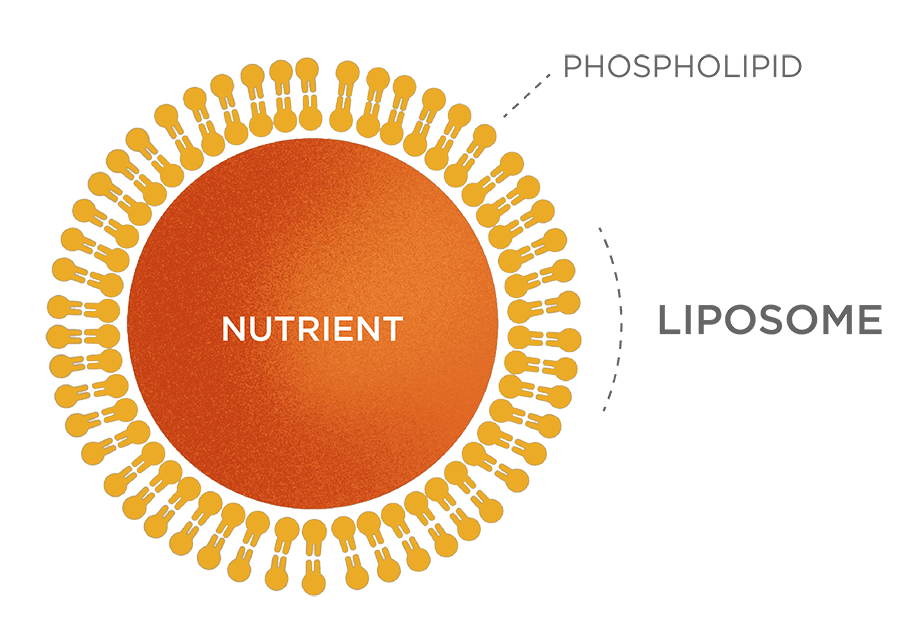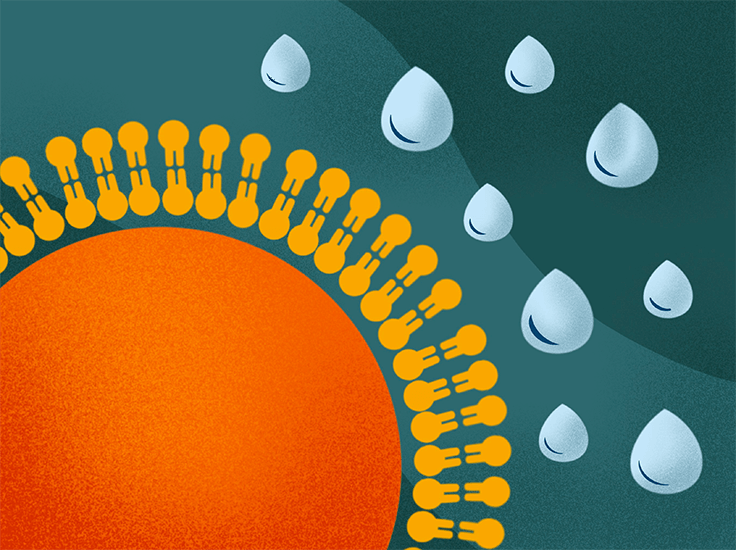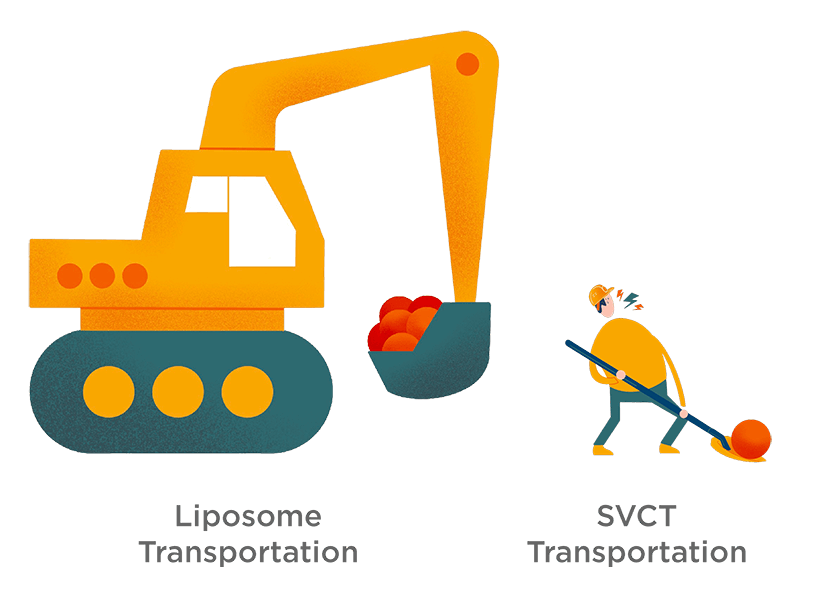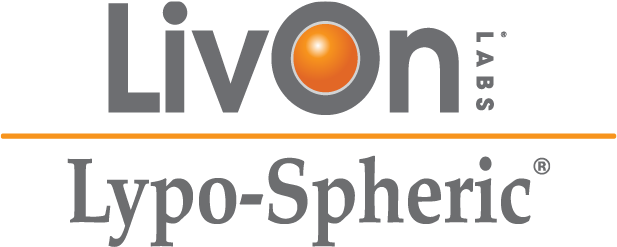
Liposome Encapsulation
The Science Behind LivOn Labs
LivOn Labs is the first dietary supplement company to use liposomal encapsulation technology to enhance absorption of critical nutrients.
Liposome Encapsulation
The Science Behind LivOn Labs
LivOn Labs is the first dietary supplement company to use liposomal encapsulation technology to enhance absorption of critical nutrients.

What are Liposomes?
Liposomes are double-layered bubbles that protect and deliver nutrients to cells throughout the body. Liposome-encapsulated supplements offer maximized absorption with every dose by outsmarting your body’s nutrient absorption barriers.
What are Liposomes
Made of?
Liposomes are made of essential phospholipids, the same material that makes up your cells. The phosphate head of phospholipids is hydrophilic; it loves water. The fatty-acid tails (lipids) are hydrophobic; they hate water.
When phospholipids are in a water-based solution, the hydrophobic tails distance themselves from the liquid just like oil separates from vinegar. As the tails turn inward and the heads turn toward the liquid, they form a double-layered membrane, which is nearly identical to the double-layer structure of the membranes that surround each of your cells.

What do Liposomes do?
Because of their composition, liposomes can pass through the intestinal wall and into the bloodstream for distribution to the cells. From there, they can assimilate into the cells and through the cell membrane to release the nutrients.

What do Liposomes do?
Because of their composition, liposomes can pass through the intestinal wall and into the bloodstream for distribution to the cells. From there, they can assimilate into the cells and through the cell membrane to release the nutrients.
Why do Liposomes Help
Nutrient Absorption?
Absorption from the digestive system varies by nutrient. Vitamin C, for example, is absorbed almost exclusively in the small intestine and requires sodium-dependent vitamin C co-transporter (SVCTs) proteins. Without these proteins, Vitamin C isn’t absorbed.
Liposomal nutrients achieve maximum absorption in the bloodstream and cells by bypassing absorption barriers without relying on transport systems.


How do Liposomes Work?
Research has not yet provided conclusive evidence as to how the nutrients in a liposome are released. One theory suggests that the liver processes the phospholipids, which releases the nutrient. Another theory proposes that cells all over the body, hungry for phospholipids to repair membranes and structures, steal these materials from the liposome, which allows their contents to leak out.
Regardless of which process occurs (possibly both), researchers have confirmed the therapeutic value and increased delivery of liposome-encapsulated nutrients countless times. At present, liposomes are one of the most effective ways to deliver nutrients.
How do Liposomes Work?
Research has not yet provided conclusive evidence as to how the nutrients in a liposome are released. One theory suggests that the liver processes the phospholipids, which releases the nutrient. Another theory proposes that cells all over the body, hungry for phospholipids to repair membranes and structures, steal these materials from the liposome, which allows their contents to leak out.
Regardless of which process occurs (possibly both), researchers have confirmed the therapeutic value and increased delivery of liposome-encapsulated nutrients countless times. At present, liposomes are one of the most effective ways to deliver nutrients.

By signing up, you agree to receive email marketing.
* These statements have not been evaluated by the Food & Drug Administration. This product is not intended to diagnose, treat, cure, or prevent any disease.
